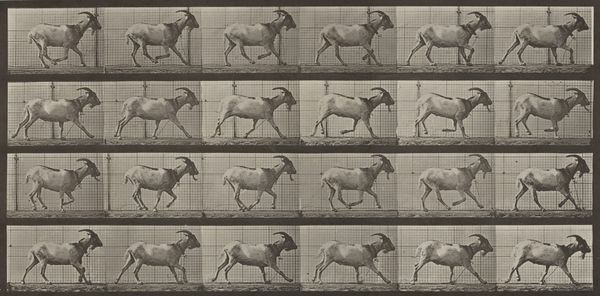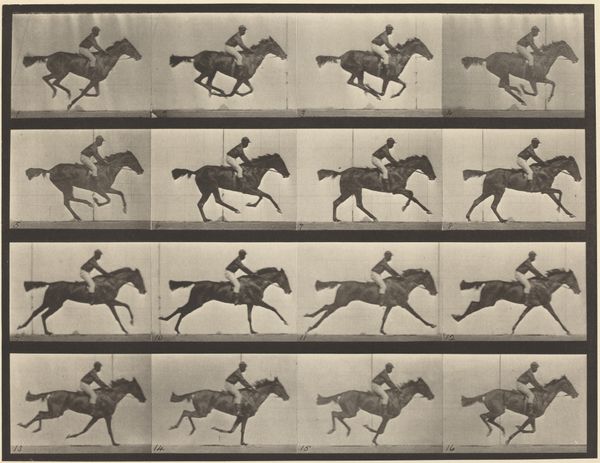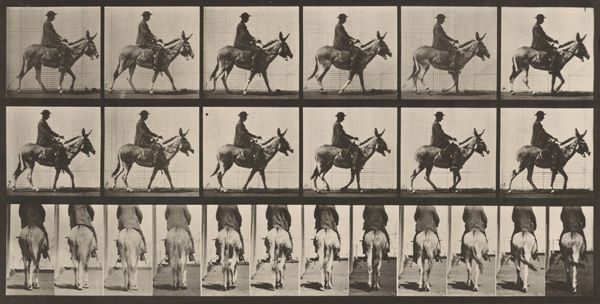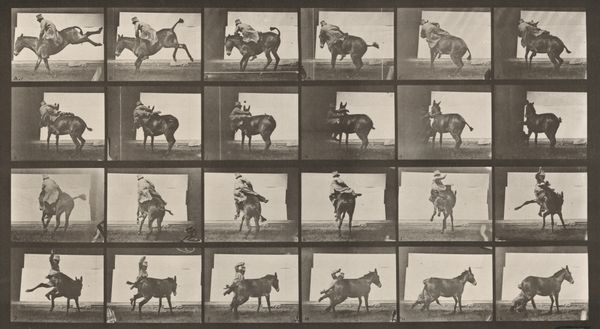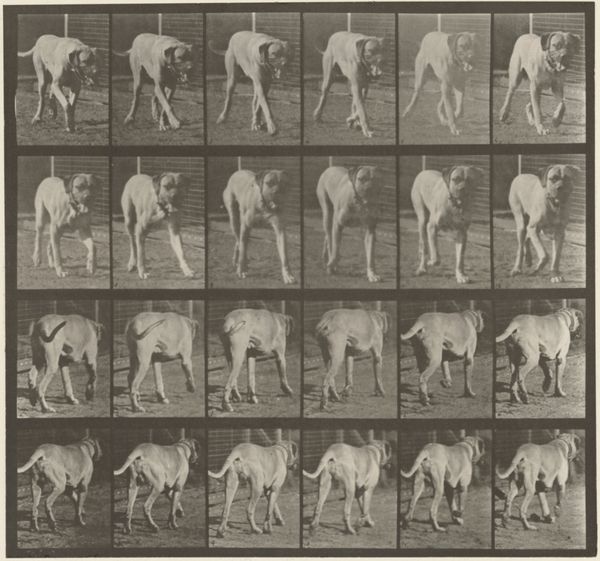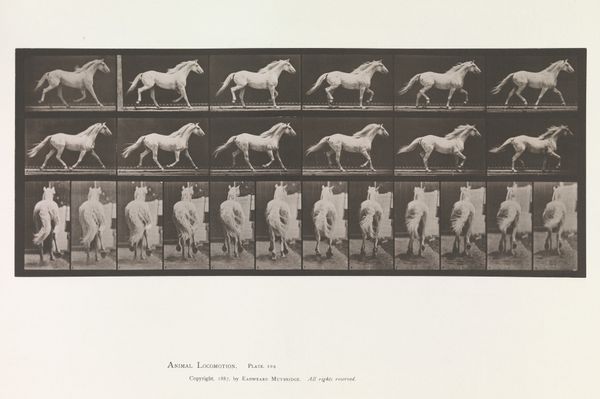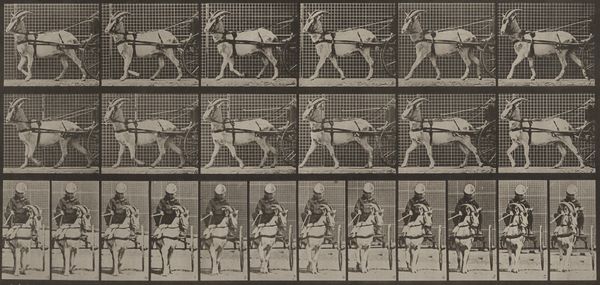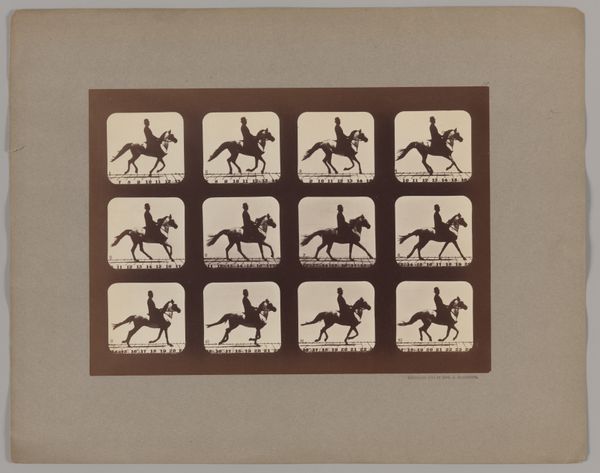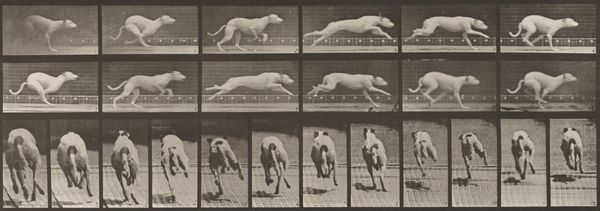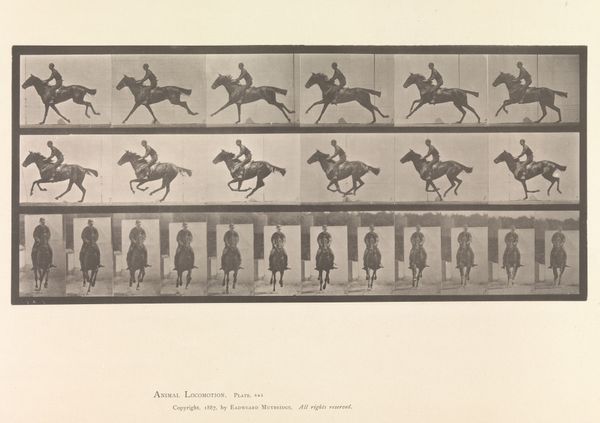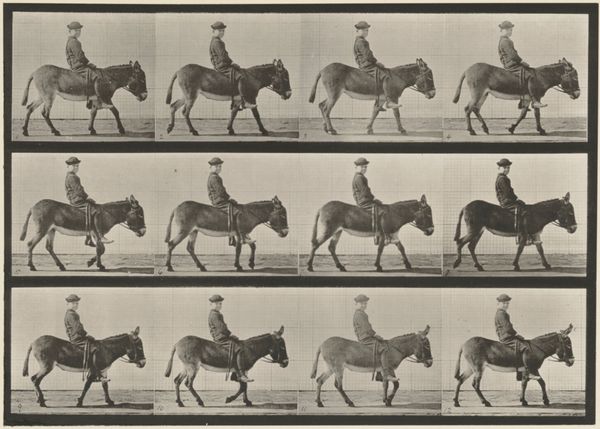
print, photography, gelatin-silver-print
#
animal
# print
#
landscape
#
photography
#
gelatin-silver-print
#
history-painting
#
realism
Dimensions: image: 22.8 × 33.6 cm (9 × 13 1/4 in.) sheet: 46.1 × 60.6 cm (18 1/8 × 23 7/8 in.)
Copyright: National Gallery of Art: CC0 1.0
Curator: Before us, we have Eadweard Muybridge’s “Plate Number 669. Ox; walking," a gelatin silver print from 1887. What’s your immediate response to this visual study? Editor: A powerful grid, yet softened by the rounded forms of the ox. It’s rhythmic, almost hypnotic, as the animal steps across this stage that Muybridge has constructed. Curator: Precisely. Look at how Muybridge dissects movement, turning a single action into a series of discrete moments. The gridded backdrop provides a structured space for his scientific observation of the locomotion, transforming the image into a form of objective analysis. Editor: But there's also something quite primal here. The ox, since antiquity, has been a potent symbol, embodying concepts from sustenance and strength to servitude and sacrifice. This series freezes what is usually continuous: the ox’s movement, burdened through time with layers of cultural weight. Curator: Observe how each frame presents subtle differences in posture and limb placement. Muybridge reduces the ox to line and plane. The consistent lighting and controlled background serve to remove extraneous variables. Editor: This ox, caught in mid-stride, seems almost suspended between realities – trapped between the historical weight it carries as a symbol and Muybridge's relentless analysis, trying to decode its movement into something scientifically understandable. Each clipped action carries the emotion, psychology and cultural history that is lost as well as that is found. Curator: He wanted to distill the purest essence of motion; for him, it appears divorced from any subjective overlay. What we’re seeing is photography pushing beyond simple representation towards abstract analysis of components within a movement. Editor: I see it differently; in dissecting, in cataloging, isn’t there still the weight of memory? Curator: That is a complex thing to find, given Muybridge’s intentions, and how stark his execution truly is. Editor: Fair point; but seeing them placed next to one another cannot help but imply what is more. Thank you for taking a closer look with me! Curator: Thank you as well, it is often through diverse discussion we find greater complexities to enjoy.
Comments
No comments
Be the first to comment and join the conversation on the ultimate creative platform.
